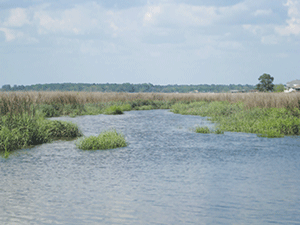Many people may not have heard about Igbo Landing, although it is an open secret to be found even online at Wikipedia.com.
Igbo Landing, the reference website states, is a historic site in the sand and marshes of Dunbar Creek in St. Simons Island, Glynn County, Georgia in the United States of America (U.S.A.).

A lot of renowned American researchers, including Timothy Powell and Benjamin Allen, have been fascinated by the 1803 uprising now known as Igbo (Ebo) Landing.
Igbo Landing has also not escaped the notice of the Igbo resident in the American Diaspora. Only in 2012, the Second Igbo Landing Dedication and Conference held in Charleston, South Carolina, around October 11 to 12.
Essentially, it was the setting of the final scene of an 1803 resistance of enslaved Igbo people brought from West Africa on slave ships.
“In May 1803, a shipload of seized West Africans, upon surviving the middle passage, were landed by U.S.-paid captors in Savannah by slave ship, to be auctioned off at one of the local slave markets. The ship’s enslaved passengers included a number of Igbo people from what is now Nigeria. The Igbo were known by planters and slavers of the American South for being fiercely independent and more unwilling to tolerate chattel slavery,” Wikipedia stated.
The website further explains that the group of 75 Igbo slaves were bought by agents of John Couper and Thomas Spalding for forced labour on their plantations in St. Simons Island for $100 each. During the voyage, the Igbo slaves rose up in rebellion, taking control of the ship and drowning their captors in the process, causing the grounding of the Morovia in Dunbar Creek at the site now locally known as Ebo Landing.
The mutiny by the Igbo people, the website said, has been referred to as the first freedom march in the history of America. Although the events had been put off as mere Afro-American folktale for more than two centuries, research since 1980 has verified the factual basis of the legend and its historical content.
The reference website, just like other sources, explains that although the site bears no official historical marker today, and a controversial sewage disposal plant was built beside the historical site in the 1940s, it is still routinely visited by historians and tourists.
It however gladdens the heart that the event was only recently incorporated into the history curriculum in Coastal Georgia Schools.
What is incontrovertible as stated in Wikipedia and other sources that have researched the matter is the Igbo slave escape in Dunbar Creek’s influence on arts and literature. The historical events, associated myth and pathos, have inspired and influenced the works of a number of African American artists. Examples include Nobel Laureate, Toni Morrison, who used the myth of the flying Africans as the basis for her novel, Song of Solomon, and Alex Haley who retells the story in Roots, a television soap on the American slave era.
The events also serve as a backdrop to the novel, Praisesong for the Widow, by Paule Marshall, and in Daughters of the Dust, a feature-length film by Julie Dash. Other contemporary artists that allude to, or have integrated the complete tale of the Flying Africans in their work, include Joseph Zobel, Maryse Conde, Jamaica Kincaid and Toni Cade Bambara.













